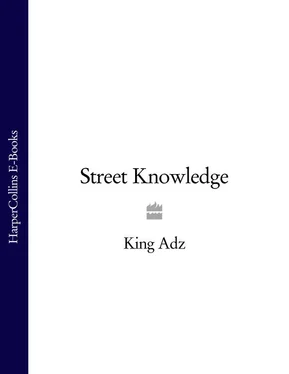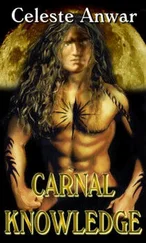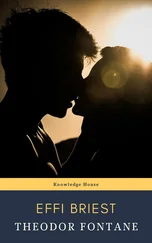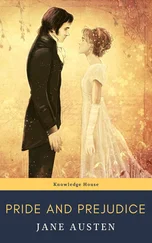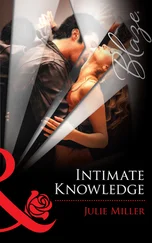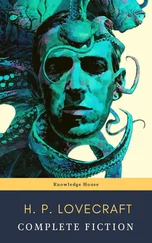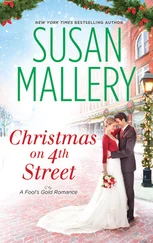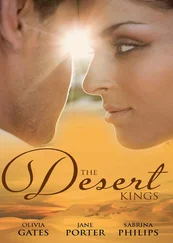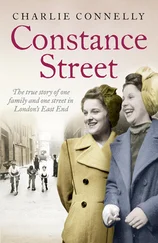So Cohen makes the beats, then Cohen and Mushon write the lyrics together, and then Itai, AKA Walter, digs in his crates and finds some vintage Israeli sample to scratch in. The song that put them on the map contained a sample from an old-school Israeli track from the 70s, to which Walter added something from an Israeli cartoon to bring out the humour. What is also interesting is that even though they rap in Hebrew, the music works overseas as the message is universal.
‘We rap only in Hebrew because we feel that hip hop is all about your own language and talking on a personal level so that the only way to say something truthful is in your mother tongue. So it was only natural for us to sing in Hebrew even though most of the stuff we listen to is in English, but we wanted to make it our own. How it happened was very simple. Michael did the beats on Fruityloops (easy-to-use music software — and by the way we still work on it!) and he used to send me beats and I said to him, “You should be the MC also,” and he said, “No, you should be the MC and I will be the producer.” I said, “No, you have great things to say!” and so we started writing together. Our first concept for a song was “I have lost my physical fitness”. It was about us being unable to run or do anything sports related. It was very important for us to put some humour in our music, because when we started out, Israeli hip hop really took itself seriously, and was very political, very heavy headed. We needed to add some of that humour we had from our heroes — Tribe Called Quest, De La Soul, The Beastie Boys — to bring back an element of fun to it. But that’s not to say that we don’t take it seriously. We don’t do it as a joke. We take our fun seriously.’
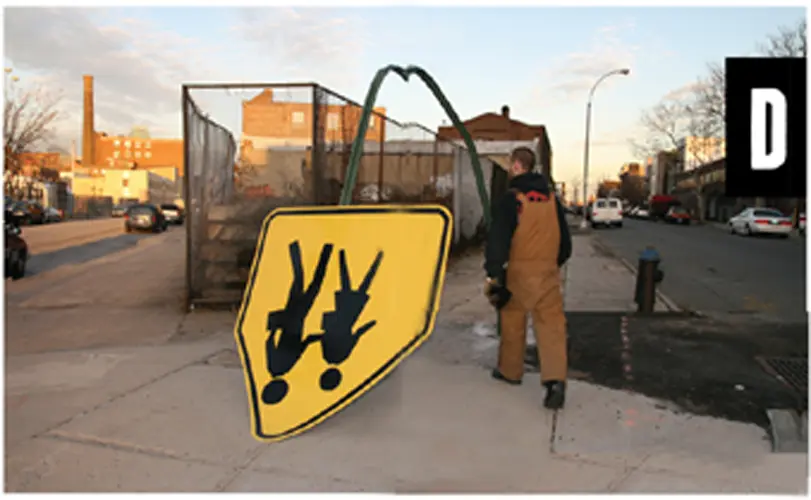
www.james-dodd.com
Jimmy and I met by chance when we were both guest speakers at some insane street art fest in Belgium (>p82). It was a strange but interesting weekend and it was one of those meetings where it feels like you’ve known the person forever, which is what friendship is all about: eternity. Jimmy used to be one of the most prominent stencil artists in Australia until he gave it all up to go back to uni and study for his Masters of Visual Art. This was an astute move as now his work has all the influences of the street but with the heavy-weight conceptual backing of the art establishment.
What Jimmy does is travel the world collecting scrawls and graffiti (not the street art kind, but the underclass style — people writing band’s names, expletives, insults, gangs etc). He shoots them on a digital camera, and then comes up with a concept to incorporate the image — like the time he built a facsimile of a Darwin bus shelter (which are renowned for being painted with very kitsch sunsets) and used exact copies of the collected scrawls to cover its surfaces. Thus underclass outsider art (ie art created by members of the underclasses out of frustration) becomes high art. I fucking love it.
‘I’ve always been attracted to graffiti and to people who do things that they’re not supposed to.’
Having spent years knee-deep in the Melbourne stencil scene, Jim knows better than most what he likes and, more importantly, what he doesn’t:
‘I’ve decided that most New York/train-oriented graf is very derivative. As a culture, it often doesn’t support innovation and experimentation. But these are the primary things that I find exciting in all creative endeavours. That’s why I find outsider graffiti so exciting, because it doesn’t adhere to a set of rules and is often unpredictable.’
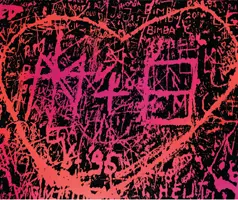
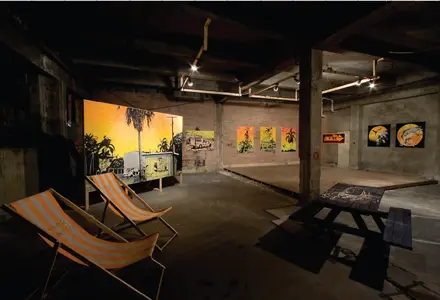
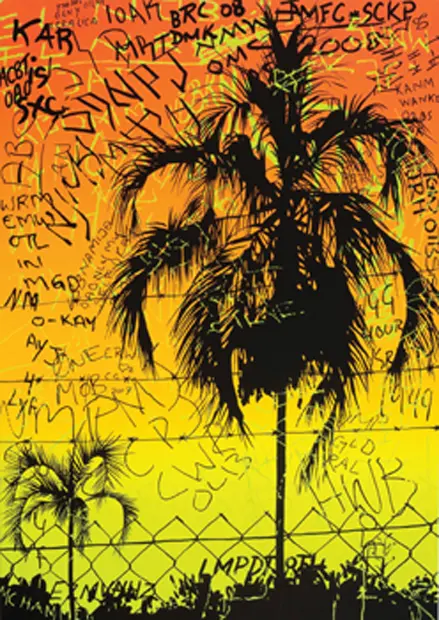
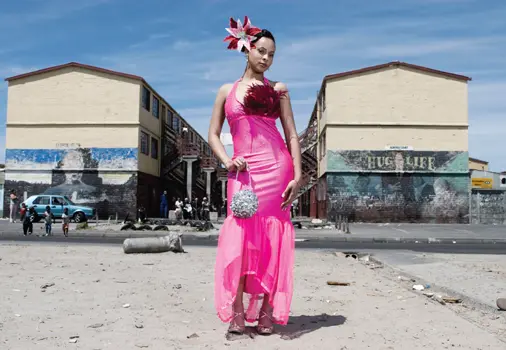
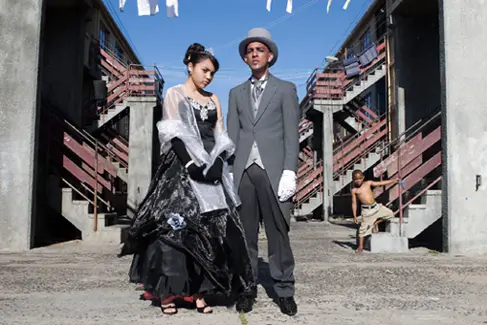
Araminta has a great story about how she got into photography and subsequently how she shot two different sides to South African — more specifically, Cape Town — life. ‘Prison gang tattoos and matric’ dresses’ for her first exhibition. (Matric’ is short for Matriculation and is when you spend your last year at high school and graduate, like the US high school prom. Then you have a graduation party and this is when the dress comes in!) The moment I spotted her work I knew that she had something special and I had to get her in here. I’ll let her tell you her story in her own words…
‘I did an architecture course in England but what I really liked was shuffling around London looking at sites I was given. I really enjoyed that bit. And then I studied it at St Martins, which was quite an odd course as it hadn’t really started as a course properly, it was just me and another girl. I had walked in off the street and said “Do you do a photography post-graduate?” and so they said, “No, but talk to the tutor who basically had to shoot all the fashion,” and he was rather bored. So he made us a course, which was lovely. And what happened was by then I had a terrible drug habit and everything went a bit pear-shaped for years and then I came out to Cape Town for treatment and rehab. I just locked myself in the darkroom in London and used it as an excuse to do what I wanted and when I came out to South Africa I started shooting properly and also I found that I had all these ideas.
‘It was because of the drug stuff that enabled me to meet the 28s and the 26s [prison gangs], really. When I came out here I had the most horrendous scars, almost disfiguring, on my face, but when I met the prison gangs, the first thing I thought was that the tattoos were such a rich art form in their own right, and I found it so fascinating, and also interesting because of my own scars. Which were nothing compared to the branding that the gangsters get from their face tattoos. It was very healing for me to see this. I had empathy for them as I had made my face peculiar as well. But I had the best year and a half with them because they are like the most amazing men and their stories are incredible. The tattoo is a kind of way for a human being to express themself when they have had everything else taken away.
‘I actually was going to do the matric’ photos across the board, all the people, but I became really interested in the Cape Flats (a notorious area of Cape Town, (>p270)) where the kids there have the best dresses, the most imagination for the one night they can style on. It was quite grinding to shoot the gangsters and I was quite happy to shoot something fun. The girls were full of self-expression and really into making a statement. They all think about the dress they are gonna wear for about five years and the parents spend every penny on it and it’s all focused on the one moment when they step out of their blockhouse in Mannenburg and the whole neighbourhood turns and looks at you and they all go wild. Just unbelievable…’
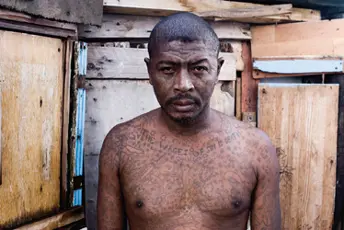 Читать дальше
Читать дальше
